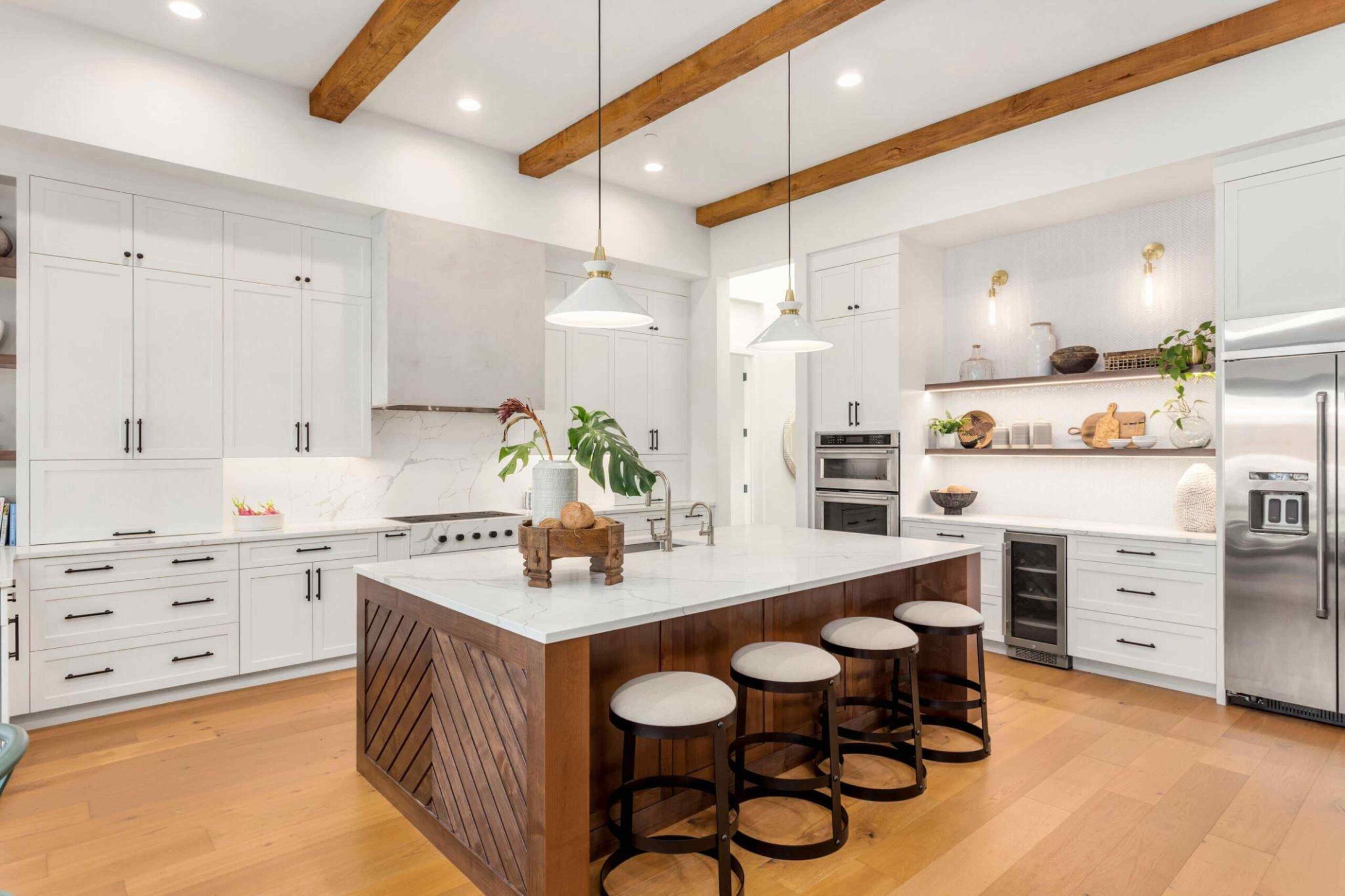As a discerning landlord, your commitment to providing safe and comfortable housing for your tenants is unwavering. In House of Multiple Occupation (HMO) properties, perhaps no space is as vital to your tenants’ well-being and contentment as the kitchen.
Hence, ensuring your HMO kitchen meets government requirements is not just a matter of compliance; it’s an opportunity to transform this utilitarian space into a stylish haven that delights prospective tenants.
Let’s explore the essential elements that elevate your HMO kitchen to an architectural marvel, pleasing occupants and regulators alike.
Contents
1. Spacious Kitchen Design
An abundance of space should be at the heart of a remarkable HMO kitchen. The government recommends a minimum kitchen size of 7 sqm, measured wall to wall, with a minimum width of 1.8m at its narrowest point. Allow an extra one sqm for every additional tenant, capping at a maximum of 10 people.
If your HMO hosts more than ten individuals, including a second kitchen is a thoughtful gesture that ensures culinary harmony.
2. Extractor Fan
Installing an extractor fan lends an ethereal atmosphere to any kitchen. This eradicates cooking odours, steam, and excess moisture, ensuring the kitchen’s allure and ambience enchant your tenants. The HMO standard is an electrically operated extractor fan capable of achieving at least six air changes per hour.
Alternatively, you may opt for an inbuilt cooker hood extractor or a standalone humidity-controlled extractor, further adding to the kitchen’s sophisticated aesthetic.
3. Cooker With Oven And Grill
A cooker, oven, and grill are essential components of any functional kitchen. In an HMO kitchen, the culinary centrepiece should have a cooker with at least four rings, a standard-sized oven, and a grill. Importantly, the cooker must be equipped with a safety switch, preventing gas flow without a flame. This safety feature is necessary to pass the gas safety checks and obtain a Gas Safety certificate which is a critical necessity according to HMO Building regulations.
4. Sink And Drainer
Hygiene is non-negotiable in any upscale kitchen, and an HMO is no exception. A single sink, ideally a standard 1m unit with an integrated draining board, is the minimum requirement. A double-bowled sink may be more fitting for larger HMOs accommodating 6-10 individuals.
Ensuring good water pressure and a continuous flow of hot and cold potable water elevates the kitchen to new standards of luxury. Each sink should have a splashback height of at least 300mm and be properly plumbed into the water supply and drainage systems.
5. Electrical Sockets
Each electrical socket in an HMO kitchen should be thoughtfully positioned to cater to every kitchen appliance’s needs. When designing the kitchen layout, consider the placement of electrical appliances such as the dishwasher, washing machine, microwave, and fridge freezer, creating at least one socket for each.
6. Worktop

The worktop transcends functionality, assuming the role of an artistic canvas upon which culinary masterpieces are created. For an HMO kitchen, the worktop should be no less than 0.6m deep and 2m long. Larger HMOs accommodating 6-10 occupants would benefit from a more extensive worktop of at least 0.6m in depth and 3m in length.
7. Storage Space
Harmony within the kitchen relies on impeccable organisation. This can only be achieved courtesy of ample storage space. Each tenant should have a storage cabinet boasting at least 0.2 cubic meters. The recommended specifications are a length of 600mm, a depth of 500mm, and a height of 700mm to ensure a seamless blend of style and practicality.
8. Fire Blanket
Fire safety is critical to HMO regulations, and the kitchen is no exception. The inclusion of a fire blanket in the kitchen area ensures small fires are swiftly restrained and individuals are safeguarded in times of emergency. Thoughtful touches like these can resonate deeply with potential occupants, being the difference between sealing the deal and a rebuttal.
9. White Goods
A harmonious HMO kitchen transcends functionality and seamlessly incorporates elegance. Ensuring essential white goods, such as a fridge, freezer, microwave, and washing machine, are impeccably provided is a testament to your commitment to tenant comfort.
Smaller HMOs warrant a clean and efficient fridge freezer with a capacity of at least five cubic feet, accompanied by a microwave boasting a power rating of 700W. For larger HMOs with 6-10 residents, a generously sized fridge freezer sporting a capacity of 9 cubic feet or more bestows an air of sophistication upon the kitchen.
10. Smoke Alarms
Vigilance is the hallmark of an exemplary landlord. Equipping the kitchen and the entire property with state-of-the-art smoke alarms ensures the earliest possible fire detection. Adhering to regulations regarding smoke alarm systems for different HMO sizes demonstrates not just compliance with building regulations but a genuine commitment to safety and well-being.




